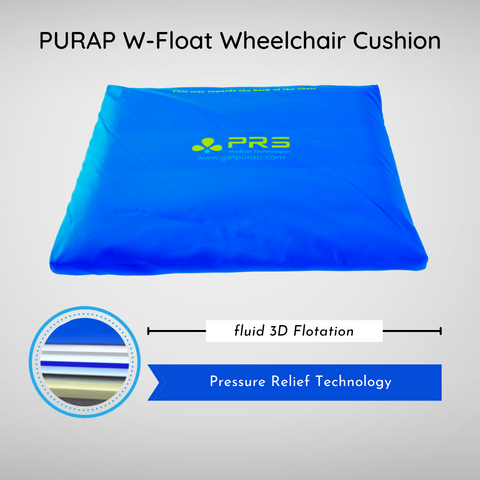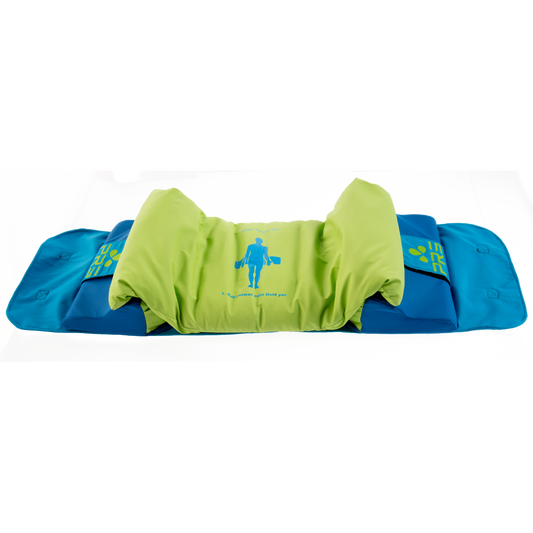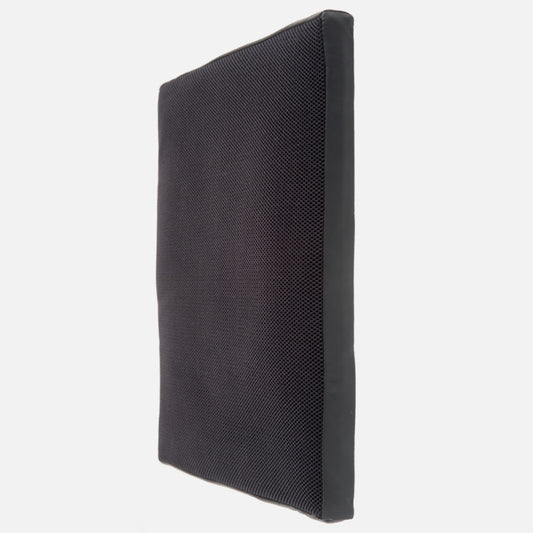PURAP W-Float Wheelchair Cushion
The best pressure-relief wheelchair cushion to fight bedsores.

PURAP has helped thousands of customers prevent and heal pressure sores on their buttocks and sacrum. Our products are designed to help people who already have pressure sores or risk developing sores - wheelchair users, people who are disabled or have limited mobility, and the elderly.
Our products use our proprietary patented fluid "3D Flotation technology". It's designed to dissipate the high-pressure points that are the root cause of pressure sores.
Fluid 3D Flotation technology is better at pressure reduction than almost all other systems - memory foam, gel, low-air-loss systems, etc.
How is fluid 3D Flotation different than other support surfaces?
Advantages over true low air-loss systems
True low air loss systems are highly expensive systems that work by blowing air through small holes on the surface of the mattress, attempting to minimize the ‘rebound’ of the mattress. PURAP provides similar or better pressure dissipation performance than these systems at a fraction of the cost.
Advantages over gel or memory foam
Memory foam and gel cushions ‘rebound’ over time, trying to get back to their original shape. That slow rebound actually creates uneven and high pressures. They are also often rigid, pre-contoured, and have a one-shape-fits-all contour. That rigidity locks you in one position and magnifies high pressure points. PURAP dissipates pressure points much more effectively than these systems.
PURAP delivers best-in-class performance
We have done multiple pressure-mapping studies, including one at Stanford University Hospital and the studies confirm that PURAP provides better pressure distribution.
Our technology helps reduce high pressure points by increasing the amount of support at high pressure points and dissipating the high pressure over a much larger, active support surface. Moreover, the fluid layer moves around freely in a bladder, so it easily adjusts to the shifting positions of the patients and adjusts to the changing high-pressure points.
Our products
-
PURAP Liquid & Air Layer Wheelchair Cushion for Pressure Relief & Bedsore Prevention – 18 x 20 x 1.5 inches
Regular price From $ 149.98 USDRegular priceUnit price per$ 155.98 USDSale price From $ 149.98 USDSale -
PURAP Pressure Relief Mattress System for Bedsore Prevention and Treatment
Regular price $ 399.98 USDRegular priceUnit price per -
PURAP U-Float Zero-Gravity Cushion for Long Sitting and Driving – Pressure Relief for Tailbone, Coccyx, Sciatica
Regular price $ 91.99 USDRegular priceUnit price per$ 124.99 USDSale price $ 91.99 USDSale -
PURAP Wheelchair Lumbar and Back Cushion with Pressure Relief Fluid 3D Flotation Technology
Regular price $ 105.00 USDRegular priceUnit price per$ 105.00 USDSale price $ 105.00 USD




